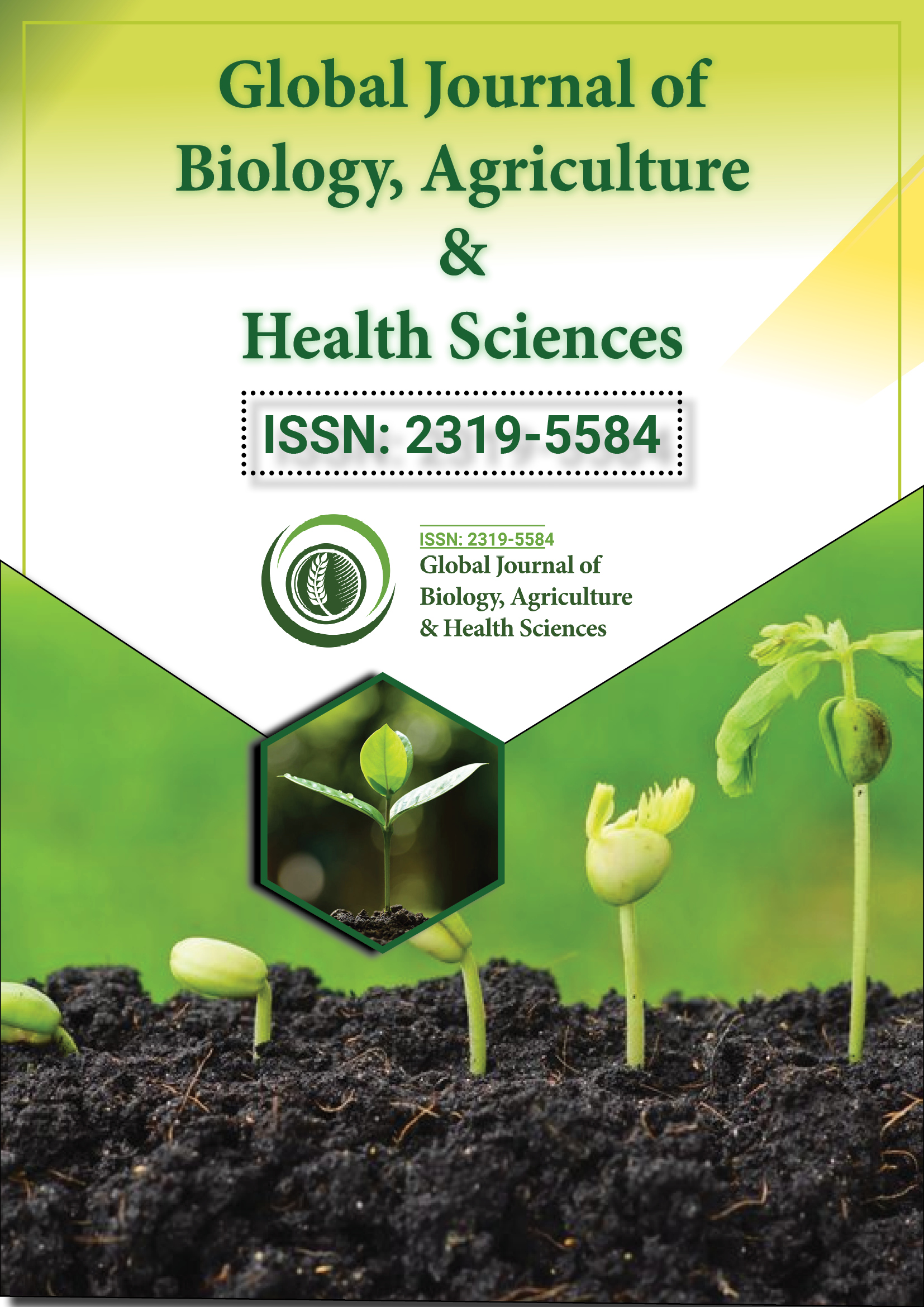Indexed In
- Euro Pub
- Google Scholar
Useful Links
Share This Page
Journal Flyer

Open Access Journals
- Agri and Aquaculture
- Biochemistry
- Bioinformatics & Systems Biology
- Business & Management
- Chemistry
- Clinical Sciences
- Engineering
- Food & Nutrition
- General Science
- Genetics & Molecular Biology
- Immunology & Microbiology
- Medical Sciences
- Neuroscience & Psychology
- Nursing & Health Care
- Pharmaceutical Sciences
Commentry - (2025) Volume 14, Issue 2
Post-Harvest Losses in Perishable Agricultural Produce: Causes and Strategies for Reduction
Josephine Langat*Received: 26-May-2025, Manuscript No. GJHABS-25-29938 ; Editor assigned: 28-May-2025, Pre QC No. GJHABS-25-29938 (PQ); Reviewed: 11-Jun-2025, QC No. GJHABS-25-29938 ; Revised: 18-Jun-2025, Manuscript No. GJHABS-25-29938 (R); Published: 25-Jun-2025, DOI: 10.35248/2319-5584.25.14.254
Description
The value of agriculture lies not only in production but in the preservation and efficient distribution of the produce. Postharvest losses in perishable crops, such as fruits, vegetables, and tubers, represent a major challenge in many regions, particularly in developing countries. These losses occur between harvest and consumption, and in some areas, they reach up to 40%, affecting food security, farmer income, and market prices. Addressing the causes and developing strategies to mitigate such losses is central to improving food system efficiency.
Several factors contribute to these losses. Inadequate storage conditions are one of the leading causes. Many smallholder farmers lack access to cold storage or ventilated facilities, and as a result, produce deteriorates quickly. High ambient temperatures, especially in tropical regions, accelerate respiration and microbial activity in fruits and vegetables. Without temperature control, harvested products lose moisture, shrink, and develop rot. In addition, poor sanitation during handling or packaging can introduce pathogens that accelerate spoilage.
Mechanical damage during handling and transportation also results in significant loss. Perishable goods are often packed in bulk containers, and rough handling leads to bruising or cuts. Damaged produce has a shorter shelf life and is more susceptible to microbial infection. Road conditions further complicate the problem long, unpaved routes increase transport time and physical shock. In some regions, delays in moving produce to markets due to logistical inefficiencies lead to further degradation before the produce reaches consumers.
Timing of harvest plays an important role. If crops are harvested before they reach proper physiological maturity, their quality may be compromised. Conversely, overripe produce is more likely to decay during storage or transit. Lack of training or guidance on optimal harvest time contributes to inconsistent quality. Furthermore, the absence of local processing facilities limits the capacity to preserve or convert perishable goods into shelf-stable forms such as juices, purees, or dried products. This limits the marketing window and forces farmers to sell quickly, often at reduced prices.
In addition, market infrastructure can influence loss levels. In many local markets, inadequate shade, ventilation, or clean surfaces increase spoilage. Products are often displayed under direct sun or exposed to dust, pests, and temperature fluctuations. Unsold produce is frequently discarded at the end of the day due to lack of refrigeration or preservation options.
Reducing post-harvest losses requires integrated efforts. One approach is improving harvesting practices. Training farmers to recognize maturity indicators and to use proper harvesting tools reduces physical injury to crops. Providing clean containers and ensuring hygienic handling minimizes introduction of spoilage organisms. Lightweight crates with ventilation holes reduce pressure damage and improve airflow.
Storage improvements are equally important. Simple innovations such as evaporative cooling chambers can lower temperature and increase shelf life for vegetables and fruits. These chambers use locally available materials bricks, sand, water and operate without electricity. Solar-powered cold storage is another viable solution in off-grid rural areas. In some pilot projects, solar cooling units have helped cooperatives reduce spoilage and extend market reach.
Conclusion
Reducing post-harvest losses in perishable agricultural produce requires attention to the full value chain from harvesting techniques, handling, and storage to market infrastructure and consumer preferences. Investments in affordable technologies, training, infrastructure, and market access can contribute significantly to improving food availability and income for smallholder producers. Solutions must be adapted to local contexts and supported through cooperative efforts among stakeholders. Consumer behavior also influences outcomes. Promoting awareness around consumption of produce with minor cosmetic damage helps reduce unnecessary rejection of otherwise edible items.
Citation: Langat J (2025). Post-Harvest Losses in Perishable Agricultural Produce: Causes and Strategies for Reduction. Glob J Agric Health Sci. 14:254.
Copyright: © 2025 Langat J. This is an open-access article distributed under the terms of the Creative Commons Attribution License, which permits unrestricted use, distribution and reproduction in any medium, provided the original author and source are credited.

